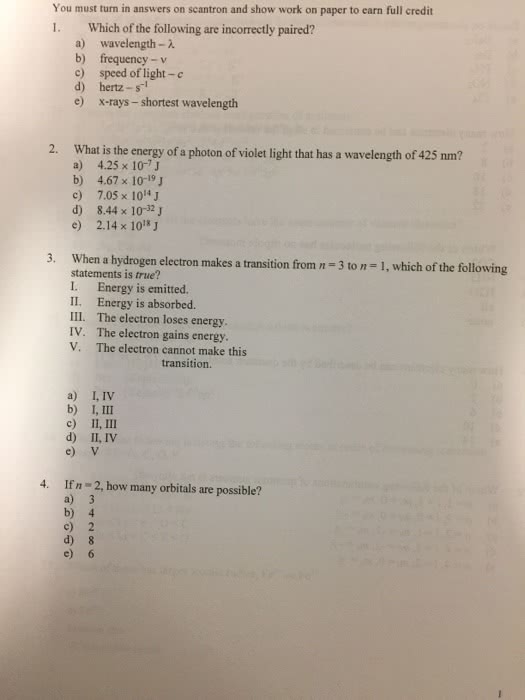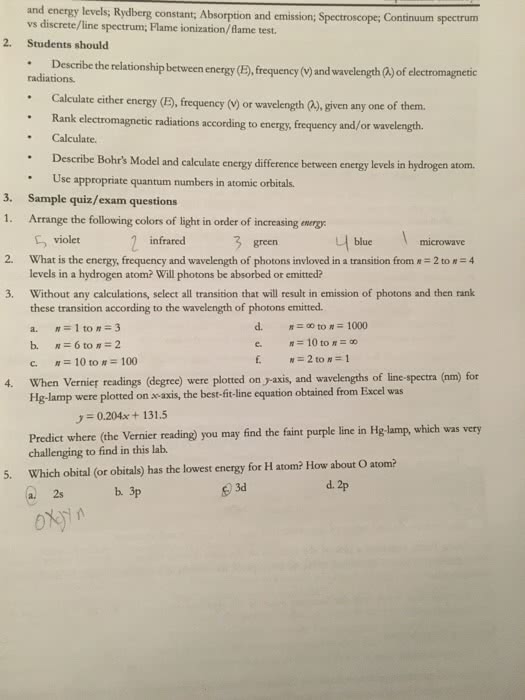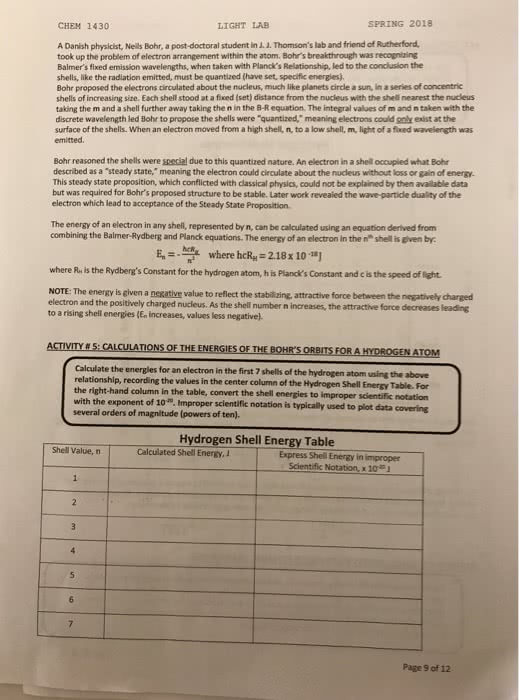The Rydberg equation expresses the wavelength, lambda, of emitted light based on the initial and final energy states (n_i and n_f\;) of an electron in a hydrogen atom:\frac {1}{\lambda}=R_{\rm H} \times \biggl( \frac {1}{{n_{\rm f}}^2}- \frac {1}{{n_{\rm i}}^2} \biggr)where R_{\rm H}=1.097\times 10^{7}~\rm m^{-1}.You may also see this equation written as\frac {1}{\lambda}=-R_{\rm H} \times \biggl( \frac {1}{{n_{\rm i}}^2}- \frac {1}{{n_{\rm f}}^2} \biggr)Since\biggl( \frac {1}{{n_{\rm f}}^2}- \frac {1}{{n_{\rm i}}^2}\biggr) = - \biggl( \frac {1}{{n_{\rm i}}^2}- \frac {1}{{n_{\rm f}}^2}\biggr) the two formulas are equivalent and sometimes used interchangeably. It can help to remember that when light is emitted, E is negative. When light is absorbed, E is positive.With some manipulation, the Rydberg equation can be rewritten in the formE=\rm constant \times \biggl( \frac {1}{{{\it n}_ {\rm f}}^2}- \frac {1}{{{\it n}_{\rm i}}^2} \biggr)which allows you to calculate the energy of the emitted light. What is the value of the constant needed to complete this equation?Express the constant in joules to three significant figures.
The Rydberg equation expresses the wavelength, lambda, of emitted light based on the initial and final energy states (n_i and n_f\;) of an electron in a hydrogen atom:\frac {1}{\lambda}=R_{\rm H} \times \biggl( \frac {1}{{n_{\rm f}}^2}- \frac {1}{{n_{\rm i}}^2} \biggr)where R_{\rm H}=1.097\times 10^{7}~\rm m^{-1}.You may also see this equation written as\frac {1}{\lambda}=-R_{\rm H} \times \biggl( \frac {1}{{n_{\rm i}}^2}- \frac {1}{{n_{\rm f}}^2} \biggr)Since\biggl( \frac {1}{{n_{\rm f}}^2}- \frac {1}{{n_{\rm i}}^2}\biggr) = - \biggl( \frac {1}{{n_{\rm i}}^2}- \frac {1}{{n_{\rm f}}^2}\biggr) the two formulas are equivalent and sometimes used interchangeably. It can help to remember that when light is emitted, E is negative. When light is absorbed, E is positive.With some manipulation, the Rydberg equation can be rewritten in the formE=\rm constant \times \biggl( \frac {1}{{{\it n}_ {\rm f}}^2}- \frac {1}{{{\it n}_{\rm i}}^2} \biggr)which allows you to calculate the energy of the emitted light. What is the value of the constant needed to complete this equation?Express the constant in joules to three significant figures.



